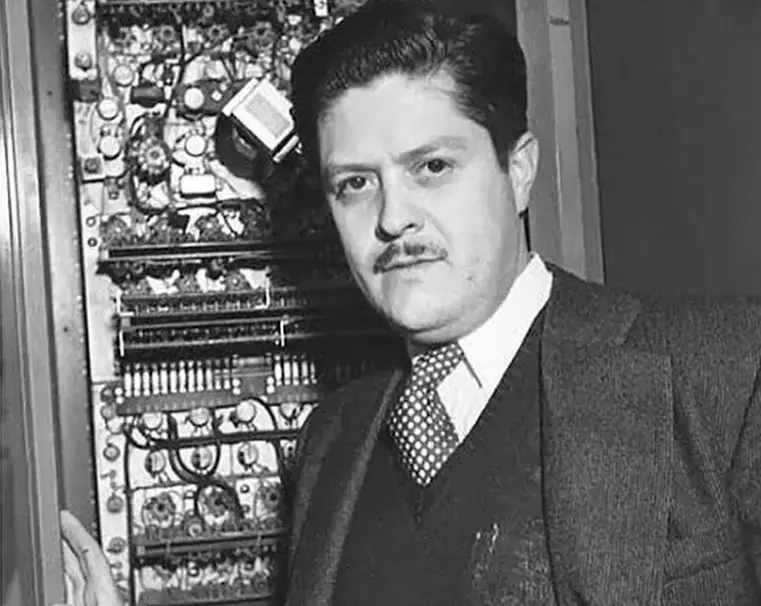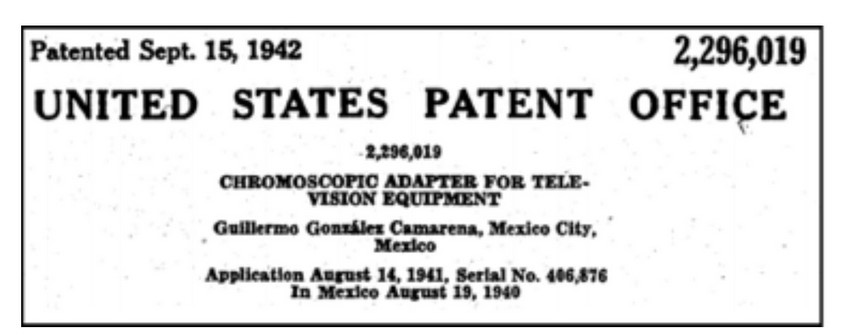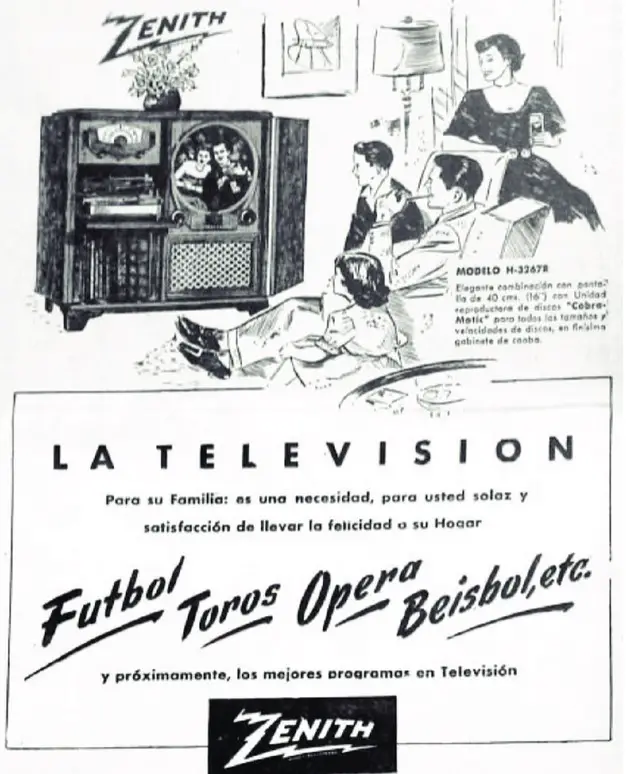Podcast: Play in new window | Download
Subscribe: Apple Podcasts | RSS
 Just outside the town of Amozoc in the Mexican state of Puebla, within view of the volcano Malintzín, a car swerved and went off the road. The date was April 18, 1965. The driver of the car was famous Mexican inventor and child prodigy Guillermo González Camarena who was traveling home to Mexico City from Veracruz after inspecting a television transmitter in the town of Las Lajas. Reports in the early 1970s claimed that eyewitnesses saw a black car force González off the road leading to speculation that the genius inventor was being monitored by national or international intelligence agencies. Was this man working on some special project of some great importance? Was the Mexican government or some foreign power using Guillermo González Camarena in some black op or covert program? González never made it home and died at the age of 48. Who was this little-known Mexican inventor?
Just outside the town of Amozoc in the Mexican state of Puebla, within view of the volcano Malintzín, a car swerved and went off the road. The date was April 18, 1965. The driver of the car was famous Mexican inventor and child prodigy Guillermo González Camarena who was traveling home to Mexico City from Veracruz after inspecting a television transmitter in the town of Las Lajas. Reports in the early 1970s claimed that eyewitnesses saw a black car force González off the road leading to speculation that the genius inventor was being monitored by national or international intelligence agencies. Was this man working on some special project of some great importance? Was the Mexican government or some foreign power using Guillermo González Camarena in some black op or covert program? González never made it home and died at the age of 48. Who was this little-known Mexican inventor?
Guillermo González Camarena was born in Guadalajara, Jalisco on February 17, 1917, less than two weeks after the official end of the Mexican Revolution. He was the youngest of 7 children, one of whom, his brother Jorge, went on to become a famous sculptor and muralist. When Guillermo was two years old, his family moved to Mexico City for better economic opportunities. When González was young, he built electric toys and other gadgets, setting up a small workshop/laboratory in his parents’ basement. From an early age, relatives and teachers alike recognized the young boy’s genius. In 1930, at the age of 13, Guillermo’s parents enrolled him in the National Polytechnic Institute, the prestigious Instituto Politécnico Nacional or IPN. Within two years he earned his license to be a radio operator. González then got a job at the radio station at the Ministry of Education while still conducting experiments and inventing things in his basement lab. Still a teenager, González built his own very powerful telescope, and joined Mexico’s Astronomy Association as one of its youngest members. When González was just seventeen years old in the year 1934, he built his own television camera. While other televisions had been in use around the world for a few years and inventors began making improvements to the quality of both the picture and the apparatus used, González set his sights on something radical, ambitious and altogether different.
 Guillermo González Camarena’s most notable achievement was the development of the color television system. In 1940, at the age of 23, he created the “Chromoscopic Adapter for Television Equipment” and obtained patents for his invention in both Mexico and the United States. For further research on this specific piece of color television technology, the US Patent office number for this invention is 2296019. This device allowed black and white televisions to display color images by adapting the existing technology. It was a groundbreaking innovation that significantly contributed to the evolution of television. González’ color television system used a rotating color wheel synchronized with the television camera, allowing for the separation of colors. The technology he pioneered became the basis for color television broadcasting and had a profound impact on the television industry worldwide. By adapting existing technology, this allowed for the color television sets and cameras to be more affordable. González demonstrated his invention on live Mexican television, becoming a pioneer in color broadcasting.
Guillermo González Camarena’s most notable achievement was the development of the color television system. In 1940, at the age of 23, he created the “Chromoscopic Adapter for Television Equipment” and obtained patents for his invention in both Mexico and the United States. For further research on this specific piece of color television technology, the US Patent office number for this invention is 2296019. This device allowed black and white televisions to display color images by adapting the existing technology. It was a groundbreaking innovation that significantly contributed to the evolution of television. González’ color television system used a rotating color wheel synchronized with the television camera, allowing for the separation of colors. The technology he pioneered became the basis for color television broadcasting and had a profound impact on the television industry worldwide. By adapting existing technology, this allowed for the color television sets and cameras to be more affordable. González demonstrated his invention on live Mexican television, becoming a pioneer in color broadcasting.
While perfecting his color television process in the 1940s, Guillermo González Camarena made valuable contributions in the field of radio transmission. In the year 1945 the Mexican Ministry of Communications hired him as an electronics communications research scientist and tasked him with establishing the legal reference units for radio dials regarding volume, noise and what is called “attenuation,” which is the reduction of the amplitude of a radio signal. Over the course of his time at the ministry, González obtained permits to operate weather balloons that he used to take radio equipment to the stratosphere. By 1949, he developed the framework that would regulate the operation and functioning of local radio transmitters, including frequency modulation, long-wave and short-wave radio and television transmissions.
 By the late 1940s Guillermo González Camarena began receiving international attention. In the United States, Columbia College of Chicago requested he design a custom television system. Scientists from the US and Europe went to Mexico to visit González to pick his brain, share knowledge and collaborate on ideas. The young Mexican researcher soon set up a small factory outside of Mexico City, employed several people and began producing television sets for export. In January of 1951, the company Radio Panamericana hired González to install the first transmitter station for Mexican television, in the form of a very tall tower which was placed between the slumbering volcanoes Popocatépetl and Iztaccihuatl.
By the late 1940s Guillermo González Camarena began receiving international attention. In the United States, Columbia College of Chicago requested he design a custom television system. Scientists from the US and Europe went to Mexico to visit González to pick his brain, share knowledge and collaborate on ideas. The young Mexican researcher soon set up a small factory outside of Mexico City, employed several people and began producing television sets for export. In January of 1951, the company Radio Panamericana hired González to install the first transmitter station for Mexican television, in the form of a very tall tower which was placed between the slumbering volcanoes Popocatépetl and Iztaccihuatl.
By the mid-1950s, television set sales were on the rise in Mexico with mass production taking place at a few major factories. González shut down his small manufacturing facility and was then hired by the Mexican government as a technical advisor to the Mexican telesystem. It was in this role where he carried out his first color broadcasts to be beamed across Mexico from a transmitter in the place of his birth, Guadalajara. The year was 1960. The first regular broadcasting of a color television show in Mexico occurred on January 21, 1963, under González’ supervision and using the Mexican inventor’s technology. The show, a children’s program, was called “Paraíso Infantil.” It aired in the afternoon because González insisted that afternoon airtime be reserved for shows dedicated to children. González so believed in the power of television to educate children – specifically with regard to improving literacy – that he coordinated with the Mexican Ministry of Public Education to develop a program known as El Sistema de Educación Telesecundaria, or in English, “The System of Tele-secondary Education.” The afternoon slots that he championed for children were then filled with fun shows for kids which emphasized the basics of reading, writing and math.
 While working on these projects of national importance for Mexico, González never stopped inventing. At the New York World’s Fair in 1963, he revealed to the world what he called the “Simplified Bicolor System” which was far cheaper than any previous system used in color television. He invented this with having a sense equity in mind, as González believed that everyone on earth should have access to television. While in the United States, some people allege that it was then when González began working on clandestine projects for the US alphabet intelligence agencies, but this is nearly impossible to verify. Many years after the death of Guillermo González Camarena, NASA, however, admitted that it did use some of Gonzalez’ work in connection with its 1979 mission of the Voyager spacecraft to Jupiter. The images sent back to earth employed advanced aspects of the Mexican inventor’s color television technology.
While working on these projects of national importance for Mexico, González never stopped inventing. At the New York World’s Fair in 1963, he revealed to the world what he called the “Simplified Bicolor System” which was far cheaper than any previous system used in color television. He invented this with having a sense equity in mind, as González believed that everyone on earth should have access to television. While in the United States, some people allege that it was then when González began working on clandestine projects for the US alphabet intelligence agencies, but this is nearly impossible to verify. Many years after the death of Guillermo González Camarena, NASA, however, admitted that it did use some of Gonzalez’ work in connection with its 1979 mission of the Voyager spacecraft to Jupiter. The images sent back to earth employed advanced aspects of the Mexican inventor’s color television technology.
Guillermo González Camarena’s contributions to the field of television and technology have left a lasting legacy. His work paved the way for the development of modern color television, which has become an integral part of our daily lives. The adoption of his technology has not only enhanced the quality of television broadcasts but has also opened up new avenues for creativity and expression in the world of visual media. González’ work has been recognized and celebrated both in Mexico and internationally. He received numerous awards and honors, including the National Science Award in Mexico. His achievements continue to inspire young Mexican inventors and engineers to pursue their dreams and make significant contributions to the world of science and technology. González’ death on that mountain road in Puebla in April of 1965, however, still remains somewhat of a mystery.
REFERENCES
Alemán Valdés, Miguel. Informes presidenciales, México: Cámara de Diputados, 2006. (in Spanish)
Cornelio, Jaime E. Televisión y poder, México: Universidad Autónoma del Estado de México, Ediciones Eón, 2015. (in Spanish)
Reséndiz Rodríguez, Rafael. México en la ‘Aldea global’, Revista de la Universidad de México, no. 484, May 1991. (in Spanish)
Sánchez Ruiz, Enrique. “Hacia una Cronología de la Televisión Mexicana”, Revista Comunicación y Sociedad, No. 10-11, September-April 1991. (in Spanish)
